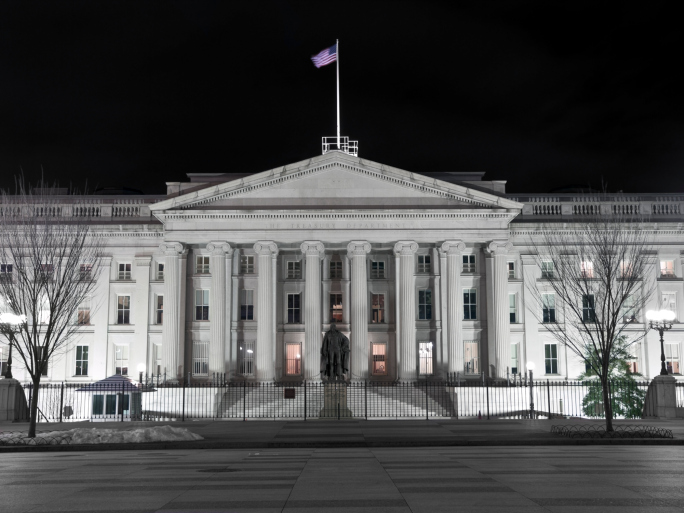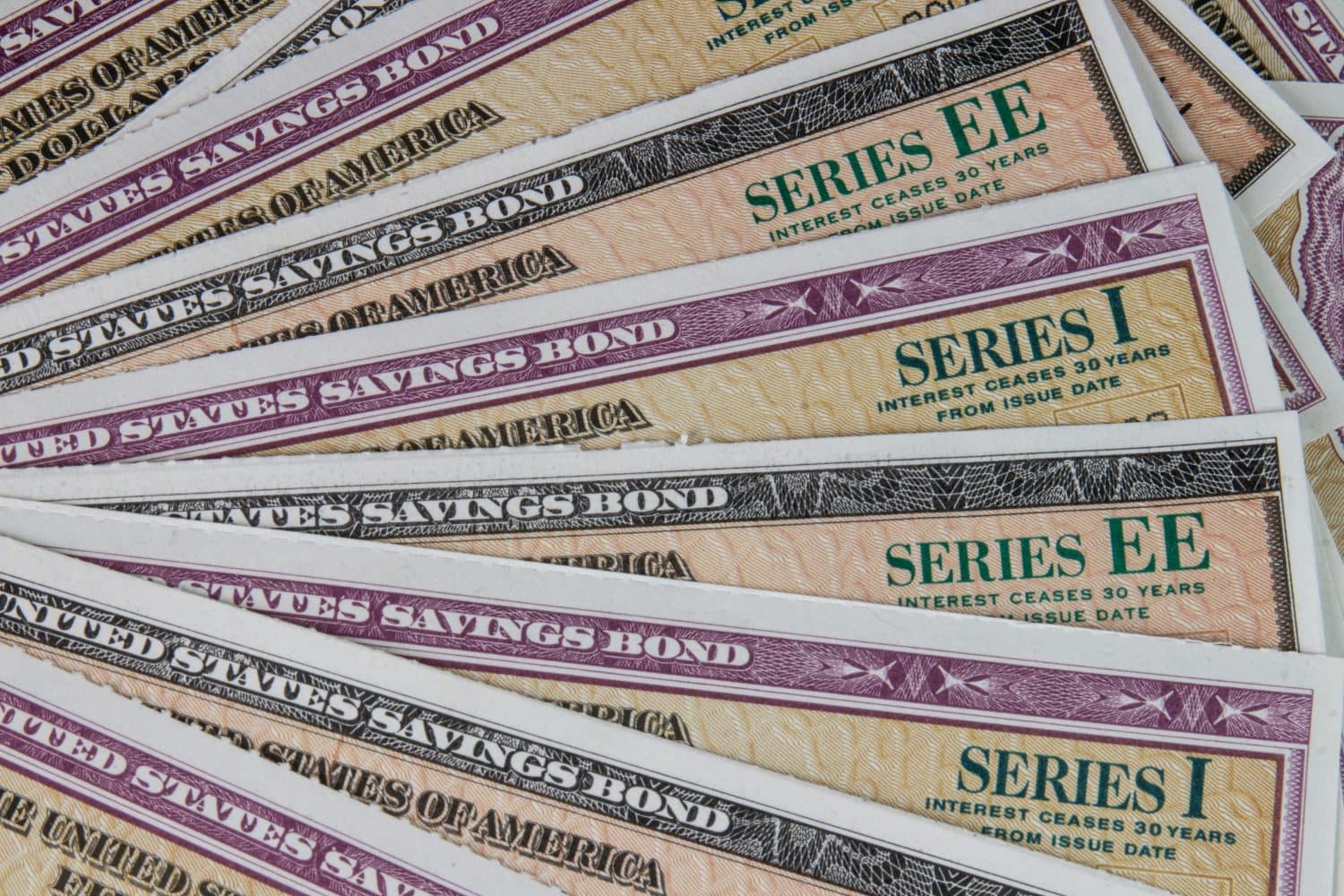
This post may contain links from our sponsors and affiliates, and Flywheel Publishing may receive
compensation for actions taken through them.
Since the Federal Reserve began cutting its benchmark interest rate last fall, shorter-term bonds have not provided much appeal to everyday investors. By the end of 2024, in response to cooling inflation, the central bank managed to lower rates by a full percentage point.
However, those falling rates helped longer-term bonds reverse course and begin rising in October and through the end of last year. For example, the 10-year U.S. Treasury fell to 3.6% in September but reached as high as 4.4% by November.
Now, conditions are ripe for the iShares 20+ Year Treasury Bond ETF (NASDAQ: TLT), and that’s being evidenced by massive inflows.
Key Points
- While bonds historically have an inverse relationship with interest rates, the TLT has proven that is not always the case, and investors are turning to the ETF in the search for a safe haven.
- As market volatility continues, defensive positions offering strong yield are increasingly attractive to weary investors.
- Four million Americans are set to retire this year. If you want to join them, click here now to see if you’re behind, or ahead. It only takes a minute. (Sponsor)
iShares 20+ Year Treasury Bond ETF


The iShares 20+ Year Treasury Bond ETF is a popular fund for yield-oriented investors looking to lower the volatility their portfolios are exposed to. The ETF seeks to track the investment results of an index composed of U.S. Treasury bonds that have remaining maturities greater than 20 years, and it does so with a manageable 0.15% expense ratio.
However, the TLT has posted only a modest 1% gain so far in 2025, underperforming the broad market’s gain of 3.62% during at same time. Zooming out, its performance is even worse. Over the past year, the fund has fallen by 7.54%, adding to its long-term woes that have seen it lose nearly 40% over the past five years.
Yet for buy-and-hold investors, the TLT still offers some appeal. It remains a popular fund, with over $53.465 billion in net assets, and while bonds and interest rates historically have an inverse relationship, while the Federal Reserve was cutting rates over the past six months, the TLT fell by 5.87%, suggesting the correlation may not be as reliable as was once believed. However, two particular catalysts are now serving as potentially bullish signals for the conservative ETF.
2 Reasons Why the TLT Is Drawing Interest


1. Weary Investors Are Looking for Safe Havens Offering Strong Yields
Since the start of 2025, Treasury rates have been luring investors back into the mix. The 20-year U.S. Treasury bond, in particular, has been flirting with 5% for the past several weeks. Currently at 4.86%, the long-dated bond is offering investors a safe haven amid the equity market’s lack of clarity under President Trump as well as ongoing volatility in tech and artificial intelligence-leveraged stocks.
As demonstrated by that late-January sell off, a looming market correction is certainly on investors’ minds. Earnings expansion has exploded over the past several years, with share price appreciation not reflecting actual company growth but a willingness for risk-on investors to buy more expensive, which to some implies that equities are overvalued. Historically, the price-to-earnings (P/E) ratio for the S&P 500 is 17.92. Currently, the market’s P/E ratio is 28.92, and when you look at individual companies’ ratios — especially in tech, which carries significant weighting from its mega cap companies — it gets even worse.
The result is that the market is historically overpriced. According to Goldman Sash’s investment strategy team, the current bull market has left the S&P 500 “more expensive than at least 90% of the time since World War II.” And with the average bull market lasting around 2.8 years, stocks could be running out of fuel since the end of the last bear market in October 2022. That is where safe-haven assets come into play. Bonds are considered low risk and low volatility. They are known for weathering market downturns and are generally stable and reliable investments.
On Jan. 14, ETF.com reported that, despite recent losses, investors continue to buy up the TLT. “Since the start of the year, TLT has seen inflows of $976 million, the sixth-most of all U.S.-listed exchange-traded funds,” according to the site. Those significant inflows suggest that investors are looking for value in longer-dated bonds as yields hover in a desirable range.
Add to that the TLT’s dividend. With perceived market overvaluation leading to inflows in defensive positions, stocks and funds offering significant yield are going to attract income-oriented investors. The TLT’s dividend currently yields 4.27%, which was good for $3.75 per share in the past year. For context, the current rate of inflation is 2.9%, meaning TLT’s dividend is outpacing consumer price increases by more than 47%.
Even if the market doesn’t fall off a cliff, it is expected that this year’s S&P 500 return will pale in comparison to last year’s nearly 24% gain. Inasmuch, investors seeking the stability of bonds and strong yield can turn to the TLT.
2. The Federal Reserve’s Big Interest Rate Pause
At its January Federal Open Market Committee (FOMC) meeting, the Fed — under pressure from President Trump to continue lowering interest rates — defied his wishes and paused its rate-cutting schedule. There are numerous factors involved, but some of the principal ones are ambiguity over the potential fallout of Trump’s tariffs, which will ultimately increase consumer prices and, subsequently, negate the work the Federal Reserve has done over the past few years to bring inflation down from its then-41-year high of 9.1% in June 2022.
Currently, the effective federal funds rate — the Fed’s benchmark — stands at 4.33% with a target range of 4.25% to 4.50%. But if we continue to see inflation remain sticky and continue to tick up, this could ultimately lead the central bank to reverse course and begin rising rates again in an effort to stave off runaway consumer prices. There have already been indications that, before Trump’s tariff and immigration policies took effect, that could be the case. But for now, the big signal from the Fed is that it is holding rates steady, which is good news for bonds and bond fund investors.
In its FOMC statement following the two-day meeting this month, the Fed noted that despite recent indicators suggesting that economic activity continues to expand at a good pace, the unemployment rate having stabilized and labor market conditions remaining solid, “inflation remains somewhat elevated.” Sticking to its goal of 2% inflation over the long run while maximizing employment, the Fed found that the “economic outlook is uncertain,” adding that the “Committee would be prepared to adjust the stance of monetary policy as appropriate if risks emerge that could impede the attainment of [its] goals.” Translated: The Fed hit the pause button, and that is welcome news for the TLT.
Take Charge of Your Retirement In Just A Few Minutes (Sponsor)
Retirement planning doesn’t have to feel overwhelming. The key is finding expert guidance—and SmartAsset’s simple quiz makes it easier than ever for you to connect with a vetted financial advisor.
Here’s how it works:
- Answer a Few Simple Questions. Tell us a bit about your goals and preferences—it only takes a few minutes!
- Get Matched with Vetted Advisors Our smart tool matches you with up to three pre-screened, vetted advisors who serve your area and are held to a fiduciary standard to act in your best interests. Click here to begin
- Choose Your Fit Review their profiles, schedule an introductory call (or meet in person), and select the advisor who feel is right for you.
Why wait? Start building the retirement you’ve always dreamed of. Click here to get started today!
Thank you for reading! Have some feedback for us?
Contact the 24/7 Wall St. editorial team.





